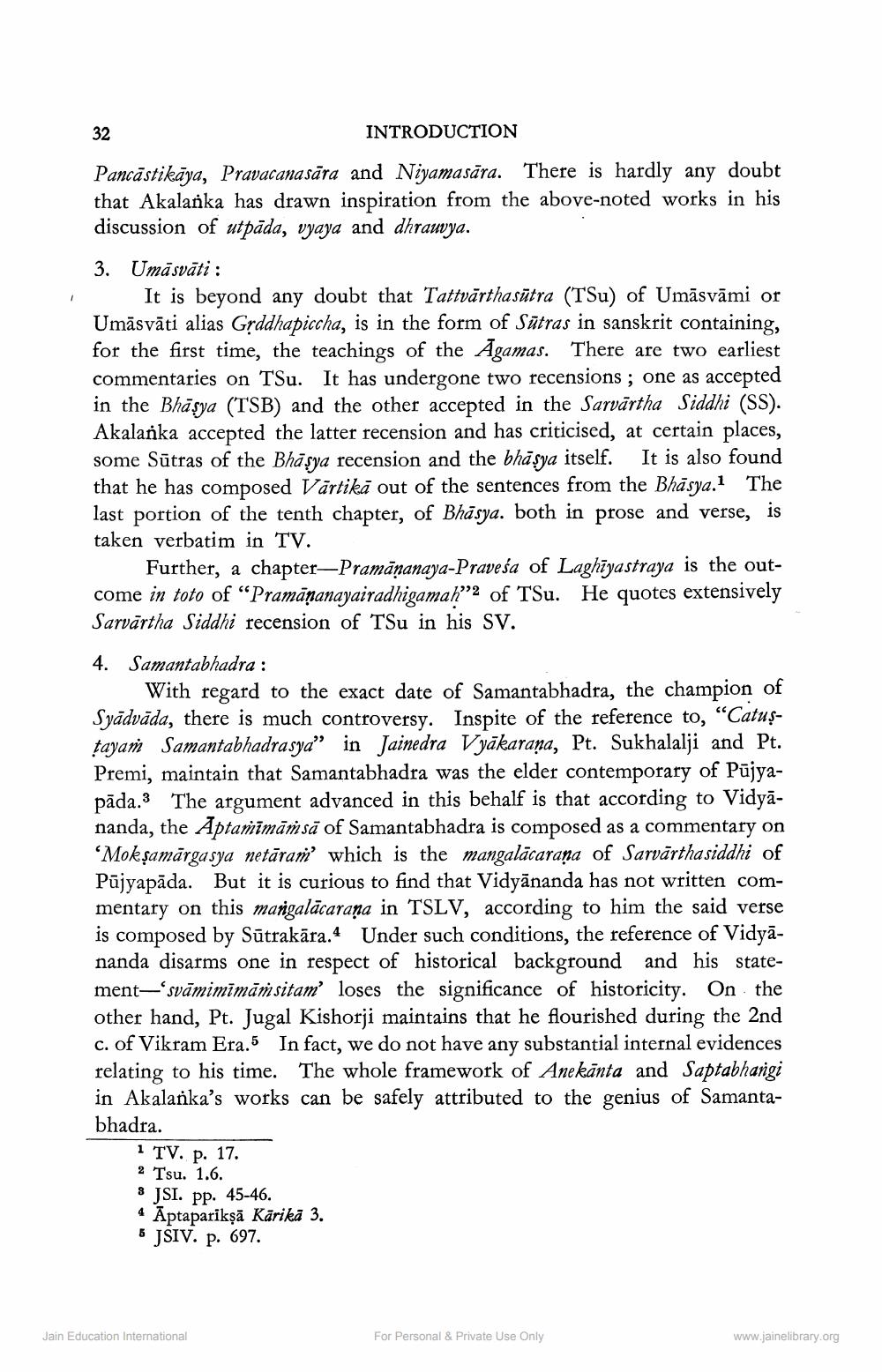________________
1
INTRODUCTION
Pancastikaya, Pravacanasara and Niyamasara. There is hardly any doubt that Akalanka has drawn inspiration from the above-noted works in his discussion of utpada, vyaya and dhrauvya.
32
3. Umāsvāti:
It is beyond any doubt that Tattvärthasutra (TSu) of Umäsvami or Umāsvāti alias Grddhapiccha, is in the form of Sūtras in sanskrit containing, for the first time, the teachings of the Agamas. There are two earliest commentaries on TSu. It has undergone two recensions; one as accepted in the Bhasya (TSB) and the other accepted in the Sarvartha Siddhi (SS). Akalanka accepted the latter recension and has criticised, at certain places, some Sutras of the Bhasya recension and the bhasya itself. It is also found that he has composed Vārtikā out of the sentences from the Bhasya.1 The last portion of the tenth chapter, of Bhasya. both in prose and verse, is taken verbatim in TV.
Further, a chapter-Pramāṇanaya-Pravesa of Laghiyastraya is the outcome in toto of "Pramananayairadhigamah" of TSu. He quotes extensively Sarvartha Siddhi recension of TSu in his SV.
4. Samantabhadra :
With regard to the exact date of Samantabhadra, the champion of Syadvāda, there is much controversy. Inspite of the reference to, "Catustayam Samantabhadrasya" in Jainedra Vyakarana, Pt. Sukhalalji and Pt. Premi, maintain that Samantabhadra was the elder contemporary of Pujyapāda. The argument advanced in this behalf is that according to Vidyananda, the Aptamimāṁsā of Samantabhadra is composed as a commentary on 'Mokşamargasya netaram' which is the mangalacarana of Sarvarthasiddhi of Pujyapada. But it is curious to find that Vidyānanda has not written commentary on this mangalācarana in TSLV, according to him the said verse is composed by Sūtrakāra.4 Under such conditions, the reference of Vidyananda disarms one in respect of historical background and his statement-svāmimīmāmsitam' loses the significance of historicity. On the other hand, Pt. Jugal Kishorji maintains that he flourished during the 2nd c. of Vikram Era.5 In fact, we do not have any substantial internal evidences relating to his time. The whole framework of Anekanta and Saptabhangi in Akalanka's works can be safely attributed to the genius of Samantabhadra.
1 TV. p. 17. 2 Tsu. 1.6. JSI. pp. 45-46. Aptaparikṣā Kärikā 3. 5 JSIV. p. 697.
Jain Education International
For Personal & Private Use Only
www.jainelibrary.org




